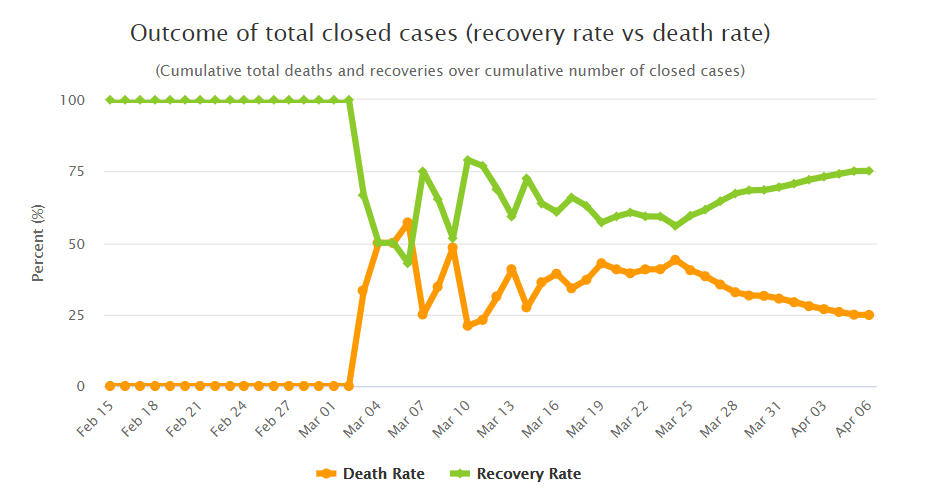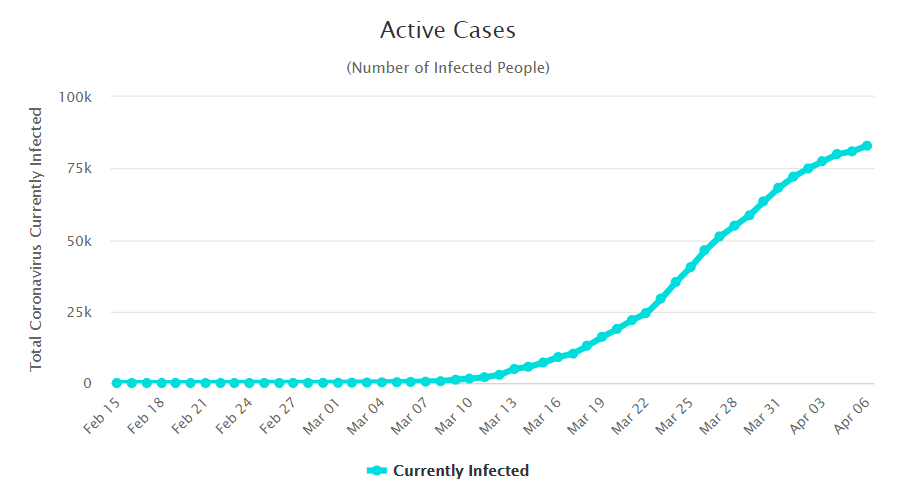SEGOVIA – On January 22nd, my friend texted me with a grim prediction – a new Coronavirus, stemming from Wuhan, China, will spread worldwide and define our new year. “Bullocks,” my friends and I scolded, “you’re just a prepper, stop worrying so much”. At this point, total cases fell at around 6,200.
Come late February, the data began to prove me wrong, but many of us remained blissfully ignorant. “These shutdown measures are overkill” I told myself. And yet again, the data proved me wrong, with Spain suffering from over 100,000 total cases since March.
However, during quarantine I embraced this data, and I can happily report that it is now on our side – the shutdown measures I scolded 3 weeks ago certainly saved us from catastrophe and are bringing Spain out of a crisis. Let me explain why:
Data point #1 – Slowing growth rates

The first way the state of emergency shows success is the slowing rate of new cases in Spain. On April 1st, Spain hit a local maximum of 8,195 cases in a single day, worse than any day in Italy and Spain’s second-worse day yet. However, on April 5th, Spain registered only 5,478 cases, a 33.2% decline in 4 days.
It seems that the Coronavirus hits in two waves – an exponential wave usually seen a few days after governments implement quarantine measures (sadly, this indicates that if these measures had come a few days earlier, they would have prevented this first spike). The second wave comes a few weeks into quarantine – probably from people leaving for necessary tasks about a week into quarantine (grocery shopping, prescription refills, etc).
Spain has seen its second wave. If we apply Italy’s model to Spain, the amount of new cases will continue to fall, not at the 33% rate from before but at a slower, consistent rate. We have a relatively simple model on our hands to picture what this could look like – a Sin(x) wave. This model indicates a slow growth which suddenly explodes, followed by a “flattening”, then a dramatic fall in cases leading to a slow, steady decline.
On its own, the slowing rate of growth is not a deal-breaker. Thousands of people each day still succumb to this virus. However, combined with our second data point, it proves incredibly significant.
Data point #2 – Rising Recovery Rates

Spain has experienced a steady increase in the survival rate since the state of emergency began, especially when compared to Italy. One main factor caused this: when viewed per capita, the outbreak affected Spain relatively uniformly, barring Andalusia, Murcia, and La Rioja. Madrid and Catalonia originally had more cases per capita, but the virus quickly spread from connected urban centers to smaller cities, evening the imbalance of distribution. Italy, however, saw most of their outbreak in their northern provinces of Lombardy, Piedmont, and Emilia-Romagna. Thus, the stress on hospitals weighed much more heavily on Italy than it did Spain, and we can observe this in their death and recovery rates.
Over the past 12 days, Spain’s recovery rate has grown about 2.1 percentage points a day – a growth which brought the recovery rate from 55% to 75% in just a week and a half. However, over the same timeframe, Italy’s rate remained at 55% – indicating an overwhelmed healthcare network unable to provide quality treatment.
This rising recovery rate indicates once again that the lockdown is working. While hospitals are certainly overwhelmed, measures taken by the government have “flattened the curve”, slowing new cases to allow healthcare providers to treat individuals with more focus.
Whatever the reason, these rising recovery rates and falling growth rate contribute to my third and final data set of interest: active cases
Data point #3 – Active cases

When researching for this article, I commonly saw the headlines “Spain Breaks 100,000 Cases” or “Italy Breaks 100,000 Cases”. However, the total cases data set provides for one use: sensationalism. This data does not tell us the current load on healthcare systems, nor does it account for population, nor does it account for age and regional differences. There’s no use for it beyond headlines.
The number of active cases provides a better measurement for tracking a nation’s progress in the COVID-19 outbreak, and luckily, this data proves my optimism yet again. Yesterday, Spain’s lowest day since March 23rd, saw 5,478 new cases, 3,861 recoveries, and 694 deaths. This totalled to a net gain of 923 new active cases, the lowest since March 13 by triple digits.
As the recovery rate continues to increase at a steady 2.1% and new cases continue to fall, we will soon cross a tipping point in the fight against COVID-19 – a fall in the number of active cases. Several countries have passed this threshold, including Austria, Luxembourg, Switzerland, China, and South Korea. While the scale of these countries’ outbreaks falls far short of Spain’s, they show promising signs, with Austria even beginning to open up small shops and some social gatherings.
However, none of them experienced as harsh of an outbreak as Spain, the largest per capita outbreak of any country with a population over 750,000. While Austria can afford to open up, with an infection rate of less than half of Spain’s, those quarantined in Segovia, Madrid and elsewhere will have to wait longer than their Austrian counterparts. That said, we should keep hope that Spain will cross the threshold soon, and that the worst of the crisis will soon fall behind us.
The Way Forward
New data over the next 2 weeks will confirm or refute my optimism. However, one thing is certain: the road to recovery will last past April 26th. PM Pedro Sanchez has both set the stage for more 15 day extensions to the state of emergency and shown a willingness to use them. The lockdown will not end abruptly, rather gradually, with measures likely lasting into May.
However, this gradual beginning could start as early as after Easter Monday, when manufacturing and construction workers will return to work. Even as the state of emergency persists, we can still regain some freedoms of movement, and possibly even small gatherings. As Pedro Sanchez said when issuing the latest extension on the state of emergency, “[estamos] empezando a ver la luz al final del túnel”. We are beginning to see the light at the end of the tunnel.






